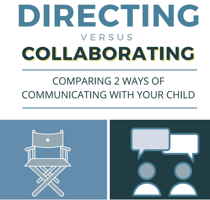Though summer hopefully has been a time for rest, relaxation, and reset, it’s also perhaps had some required summer reading for your student (whether they’ve started it yet or not...) This type of homework can feel like the antithesis of fun, especially during summer vacation, and your student may feel like putting it off until the last minute. This is often the moment at which summer reading suddenly becomes an unsought-after family affair.
So how can you approach required reading during the summer in a more relaxed manner? The answer is actually pretty straightforward: engage in more non-required reading activities. Yep, that’s right, I’m suggesting your student—and you—read more. I’m also suggesting you create a reading culture in your home. 
To illustrate what creating a reading culture might look like, consider a lovely Christmas Eve tradition in Iceland called Jólabókaflóð (which translates to “Yule Book Flood”). Imagine this summer variation: a book exchange within your family that ends with everyone finding a comfy spot to sit down with their new book and a cool drink. Doesn’t that sound delightful?
Each family’s reading culture will differ. It may involve traditions, like the one described above, or occasional activities. Below are a few practices to build your family’s reading culture, which will also hopefully make reading exciting and gratifying for your student.
1. Follow a Recipe
To help students build their sequencing and reading comprehension skills, put them in charge of researching a recipe, reading directions, and organizing ingredients. Not only will this reading activity end in a tangible reward, but it’s also a great way to teach attention to detail, project management, and attention skills in an interactive setting. If you have young learners, this Scholastic article offers some extra benefits of cooking with kids, including vocabulary building and reading “environmental print”—that is, words that are accompanied by visual cues—when looking for the needed ingredients.
2. Read Aloud or Alongside
A great way to demonstrate “we-do” modeling to students is to either read aloud with or read alongside your students. To learn more about the value of families reading aloud, check out the Read Aloud Revival, a website that offers resources (the podcast is excellent), book recommendations, and insight from experts about why reading aloud is so beneficial. Not only does reading aloud promote reading comprehension and help students form connections between ideas, for students in both primary and secondary education and higher education, reading aloud has been found to boost feelings of belonging and being part of a community. And this makes sense: reading aloud moves reading from a solitary action to an interactional one.
While your teen may not want to read aloud with you or anyone else, you can still create an interactional setting. Consider forming a book club within your home. Does your teen have to read The Grapes of Wrath over the summer? Read the book alongside your teen and come together for discussion every so often. Bring up questions you have about the book, and see what your teen thinks. Some teens may have both summer reading and writing assignments based on the readings. Consider framing your discussions as springboards for making the writing assignments less stressful.
3. Building Stories
Storytelling is an awesome way to make reading more interactive. Play games with your family that allow for storytelling and story-shaping. Here are a few ideas:
- Bananagrams: Though this is a word-building game, consider ending the game by having each person tell a story that incorporates all the words they created.
- Continue the Story: Even as an adult, I get a kick out of the game where you begin writing a story, fold over the page so only the last line is showing, and then pass the page on to another person to add the next line. The results are pure hilarity, as the story will be a jumble of ideas and thought processes. Playing with your student(s) can make for a creative metacognitive task, while also making reading and writing feel less scary.
- Taboo: Though this game has a bit more to do with verbal processing than reading, it’s a good way to promote both attentiveness and metacognition, as your student navigates getting others to guess a word without saying any of the “taboo” words.
- Telephone-Pictionary: This party game may be just the ticket for the visual and tactile learners among your family. Give each person playing as many squares of paper as there are players, and have the players number their squares of paper. On the first card, players should write a sentence or phrase (the more complex the better). Then players pass the whole deck to their left. On the second card in each deck, all players look at the first card, and try to draw on the second card what they read on the first card. The first card goes to the bottom of the deck, so that only the second card is visible. When the deck is passed to the left again, the players write a phrase or sentence based on what they see in the picture. The game continues alternating between drawing a picture and writing about what you see in the picture until the decks come full circle and reach their original owners.
So, I invite you to make reading less of a “school thing” and more of an everyday thing this summer. That way, when summer reading due dates roll around, your student will have a lot of positive experiences with non-required reading to make the task feel like no sweat.
 Learn how to navigate conversations with your student on reading and other school-related topics with less conflict by downloading our infographic.
Learn how to navigate conversations with your student on reading and other school-related topics with less conflict by downloading our infographic.
Photo by Seven Shooter on Unsplash

